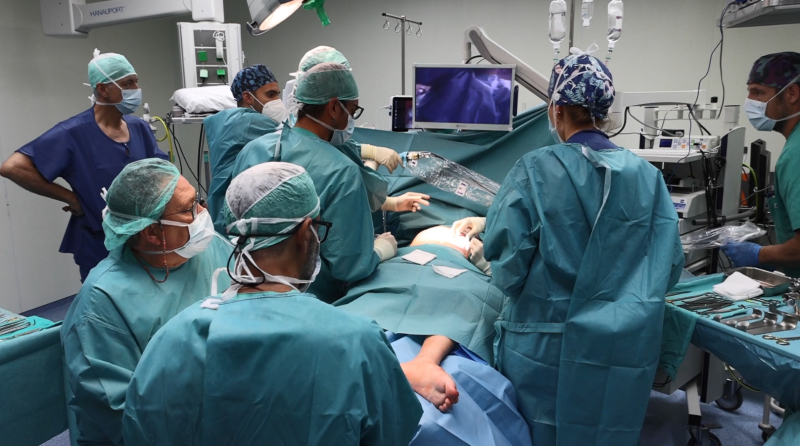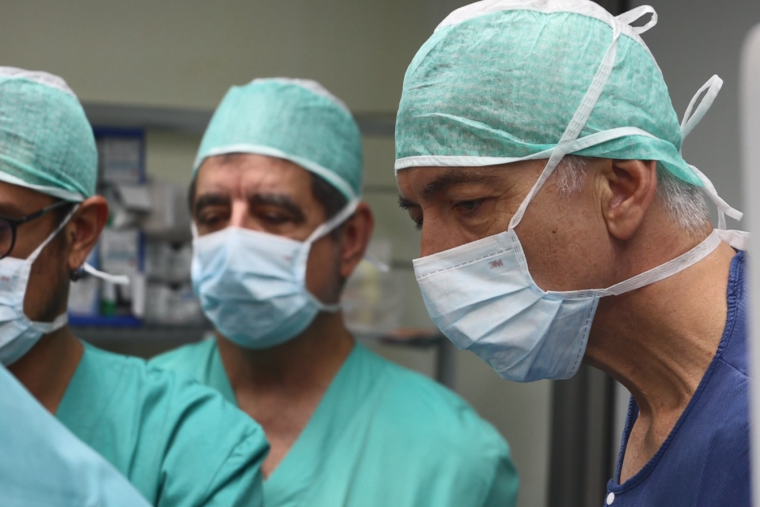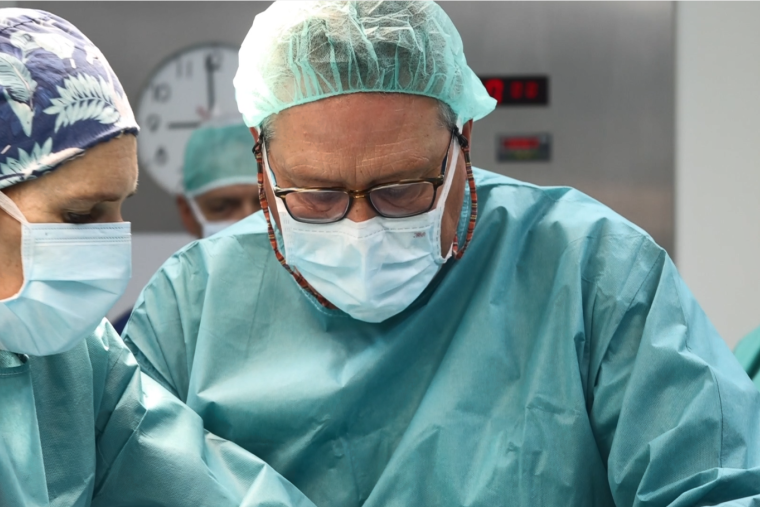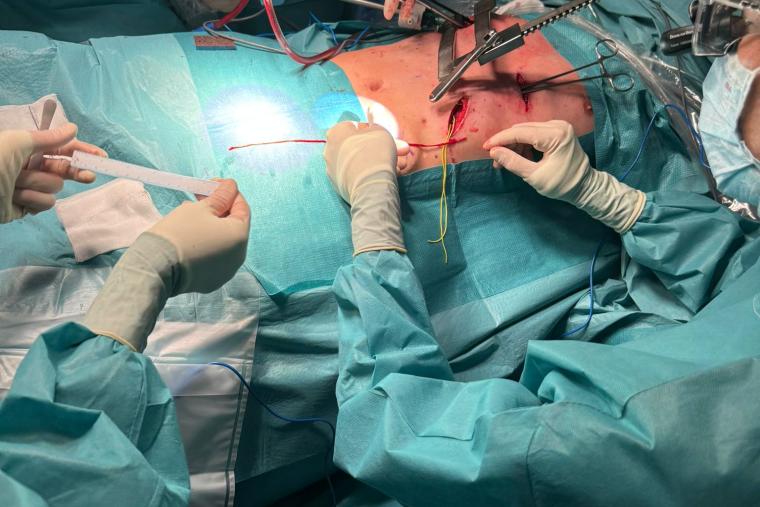First operation in Europe to reconstruct the brachial nerve so that patients with high tetraplegia can breathe again.
First operation in Europe to reconstruct the brachial nerve so that patients with high tetraplegia can breathe again.

Professionals from the Institut Guttmann and the Germans Trias i Pujol Hospital have performed an operation that in some cases allows patients to recover the mobility of the diaphragm, the main muscle responsible for breathing, and thus make it possible to implant a diaphragmatic pacemaker. This could allow a total or partial withdrawal of mechanical ventilation, which increases the quality of life and life expectancy of patients.
In patients with tetraplegia or high cervical spinal cord injury there is a failure of ventilatory autonomy resulting in dependence on mechanical ventilation, which significantly reduces their quality of life and life expectancy.
The implantation of a diaphragmatic pacemaker to increase this respiratory autonomy and allow partial or total withdrawal of mechanical ventilation is effective in 40% to 80% of cases, but cannot be carried out if the brachial nerves, which transmit nerve impulses to the diaphragm, are damaged. For the first time in Europe, professionals from the Institut Guttmann and the Germans Trias i Pujol University Hospital have performed a brachial nerve reconstruction on two patients with tetraplegia, with the aim of recovering diaphragmatic activity and facilitating the withdrawal of mechanical ventilation for a year. The procedure was performed under the guidance of Dr. Matthew R. Kaufman of the Institute for Advanced Reconstruction (New Jersey, USA) and UCLA Medical Center in Los Angeles (California, USA).
Mechanical ventilation via tracheostomy is the standard therapy for patients with tetraplegia following spinal cord injury above the C4 neurological level. Its chronic use is associated with important factors affecting quality of life, such as speech difficulties, anosmia (loss of smell) or increased secretions. In addition, patients experience a high rate of medical complications that reduce their life expectancy, such as pneumonia and atelactasis (collapsed lung), among others. ‘The total or partial withdrawal of mechanical ventilation in these patients means an increase in survival and quality of life’, Dr. Estefanía Sánchez, pneumologist at the Institut Guttmann and specialist in mechanical ventilation and diaphragmatic pacemakers.
Between 40% and 80% of cases can partially or completely withdraw mechanical ventilation thanks to the implantation of a pacemaker that directly stimulates the diaphragm, the main muscle responsible for breathing because it allows breathing in (when contracting) and breathing out (when relaxing). The Diaphragmatic Pacemaker Functional Unit of the Guttmann Institute and the Germans Trias i Pujol Hospital is the only one in Spain that performs this procedure, which was first performed in 2007 with the advice and training of Dr. Raymond Onders (Cleveland, USA).
However, for the procedure to be successful, the integrity of the cranial nerves, which transmit the nerve impulse to the diaphragm, is essential. Nerve transfer or reconstruction, which consists of connecting the patient's own nerve or innervate nerve to the injured brachial nerve, has the objective of recovering the nerve impulse.








